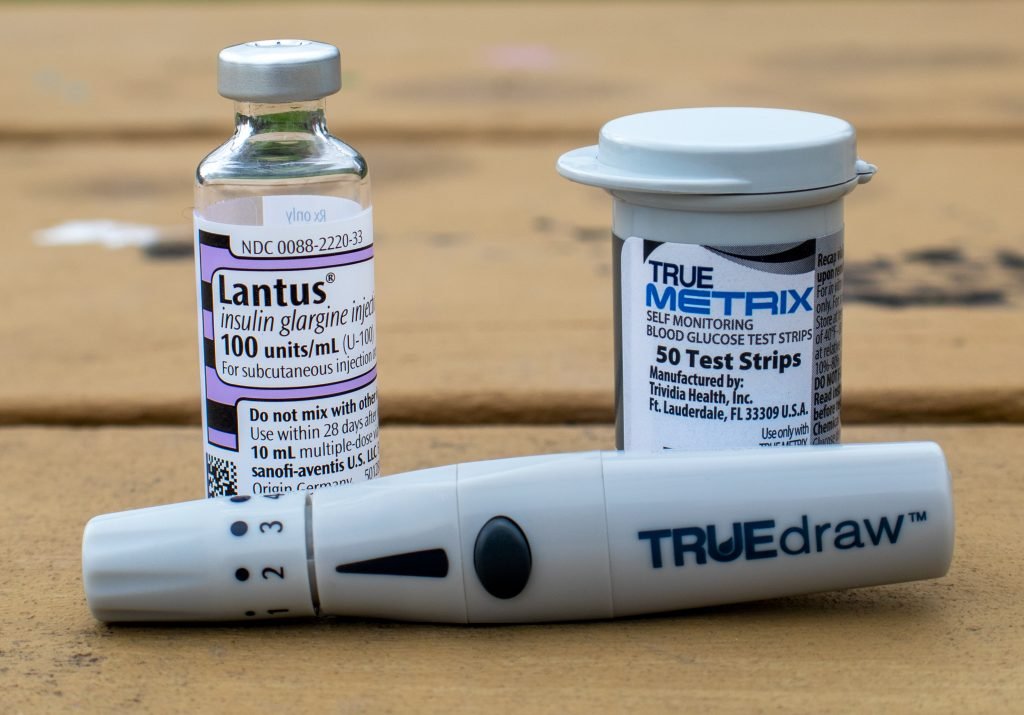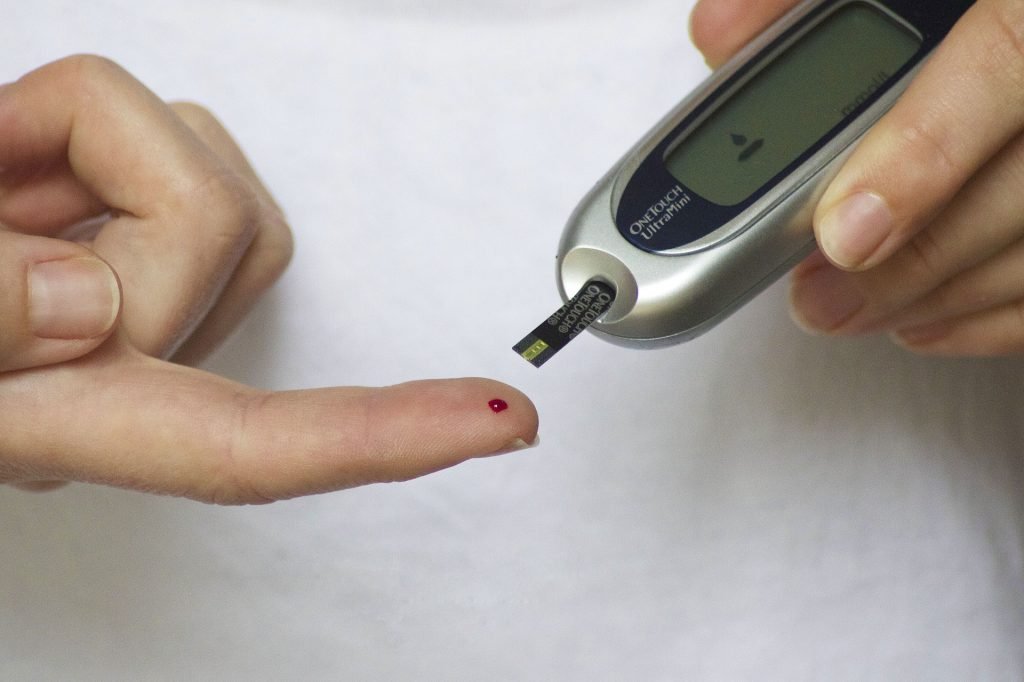
The term ‘diabetes’ refers to a group of diseases related to the insulin hormone, whereby insulin transfers sugar to cells to store it and use it to produce energy. Therefore, any disorder of the insulin hormone leads to high blood sugar. We should note that when the blood sugar level is higher than normal, we say that the person has type 2 diabetes. This condition is called prediabetes. In this article, we are going to talk about the causes of diabetes.
The pancreas produces insulin. When this organ is unable to produce insulin or produces it in very small quantities or the body does not respond appropriately to the presence of insulin, diabetes occurs.
There are several types of diabetes, and each type has its own causes. Here are the causes of each type of diabetes:
It is widely believed that type 1 diabetes is due to a mixture of unclear environmental factors and genetic preparations. Health professionals tend to exclude excessive weight as the main factor of this disease.
Although the exact cause of the disease is still unknown, health practitioners tend to agree that it is mainly due to the immune system which, in addition to attacking viruses and bacteria, attacks insulin-producing cells in the pancreas and destroys them.

Thus, people with this type of problem suffer from a lack of insulin in their bodies. Or their body produces insulin but in very small quantities. This is why this type of diabetes is called insulin-dependent diabetes. To survive, people with this type need insulin injections on a daily basis.
Although this type of diabetes may appear at any age, doctors usually diagnose it in children and young people. In case the insulin-producing cells exist at the time of diagnosis, the immune system often destroys them within five to ten years.
In addition to the immune system, here are some other possible causes of type 1 diabetes:
the risk of type 1 diabetes increases if a parent or sibling develops it.
Some countries, such as Sweden and Finland, have high rates of type 1 diabetes.
This type of infection may lead to the destruction, or malfunctioning, of the pancreas which is responsible for the production of insulin.
Toxins constitute a real threat to our bodies. They even lead to death.
These ingredients trigger an autoimmune reaction and autoimmune diseases.
Exposure to certain conditions, such as viruses, germs, microbes, etc., is likely to cause type 1 diabetes.
These are destructive immune cells that increase a person’s risk of developing type 1 diabetes. But this does not necessarily mean that everyone who has these cells has diabetes.

Type 2 diabetes is the most common type of diabetes. People who suffer from this disease often have insulin resistance. I.e, their body fails to respond properly to insulin, which means levels of both insulin and glucose will often build up. Although their body can produce insulin in the early stages of the disease, this process eventually stops. Also, this type of disease may occur at any age, even in childhood, but it often occurs in middle age and the elderly.
In addition to the information given above, here are other reasons that increase the risk of type 2 diabetes:
Type 2 diabetes increases with age, as individuals tend not to exercise, and gain weight, in addition to losing part of their muscle mass.
High blood pressure at a level of more than 140/90 mmHg is associated with an increased risk of getting type 2 diabetes
Increased levels of triglycerides, a type of blood-borne fat, increase the risk of type 2 diabetes. Plus, lower levels of high-density lipoprotein, known as good cholesterol, increase the risk of type 2 diabetes.
Constant exercise and movement help control weight, utilize glucose as an energy source and increase cell sensitivity to insulin. So lack of movement and activity increases the risk of type 2 diabetes.
Scientists found that small parts of DNA affect the way the body produces insulin.
Suffering from polycystic ovary syndrome increases the risk of type 2 diabetes in women. This occurs when hormone levels in a woman’s body are disrupted, leading to cysts build-up in the ovary.

An individual has an increased risk of developing type 2 diabetes if a relative develops diabetes. So it is necessary to tell your doctor if a family member has diabetes.
Although gestational diabetes disappears after pregnancy, nearly half of women who suffered from this disease earlier are diagnosed with type 2 diabetes within 15 years. In addition, the birth of a child weighing 4 kilograms or more increases the risk of type 2 diabetes later even if the mother did not suffer from gestational diabetes during pregnancy.
Drinking alcohol and smoking can increase your risk of developing type 2 diabetes. So, quitting smoking and using alcohol can help avoid getting diabetes
Overweight and obesity cause insulin resistance, especially if it is in the abdominal area.
People with insulin resistance are often exposed to a range of health troubles, including high blood pressure, increased fat around the waist, high blood sugar, high cholesterol, and triglycerides.
When the blood sugar level is low, the liver sends glucose. After eating, the blood sugar level rises. So, the liver stores glucose for later use. But in some people, it does not happen and the liver continues to break down sugar.
Sometimes the wrong signals are sent and received between cells. This affects the production or use of insulin or glucose by cells and may cause diabetes.
If insulin-producing cells send the wrong amounts at the wrong time, their blood sugar level is broken, and their high level may cause damage to these cells.
Some theories explain why gestational diabetes occurs, although its cause is not yet known. During pregnancy, the placenta that supplies water and nutrients to the fetus produces some hormones that stop the effect of insulin. These hormones, such as cortisol estrogen, and human placental lactogen, are important for continued pregnancy.
This condition usually begins between the 20th and 24th weeks of pregnancy. As the placenta continues to grow, the production of these hormones increases, which always results in an increased risk of suffering from insulin resistance.

In this case, the pancreas tries to produce more insulin to overcome insulin resistance, but the amount of insulin produced is insufficient to overcome the effect of placental hormones. This eventually leads to gestational diabetes.
Listed below are other reasons for high blood sugar during pregnancy.
Glucose is a type of sugar that we can obtain mainly from carbohydrate-rich foods, such as bread, fruits, and potatoes. The body uses it as an energy source. When eating these foods food moves from the esophagus to the stomach. The latter breaks the food into small pieces through enzymes and acids. In the process, glucose sugar that travels to the intestines is absorbed and transported to the bloodstream. Because sugar is transmitted through blood to cells, it is called blood sugar.
Once glucose reaches the blood, the pancreas, the organ behind the stomach, stimulates the production of insulin hormone in addition to many other digestive enzymes. Insulin controls the amount of blood sugar and helps the transfer of glucose from the blood to cells that convert it into energy to be used immediately. Glucose can also be stored in the form of glycogen or fat to be used when needed.
We should note that sugar levels vary during the day, as they increase after meals, then drop to their previous level about two hours after eating. Then, insulin production decreases.
Although many people have levels of sugar that exceed the normal limit, this rise is not enough to diagnose them with diabetes. This condition is known as prediabetes i.e., the introduction of diabetes.
We should note that prediabetes occurs in people with insulin resistance, a condition in which cells in the muscles, liver, and fats are unable to respond well to insulin i.e, they are unable to easily withdraw glucose from the blood.
Prediabetes also occurs in people whose insulin is not produced by beta cells in the pancreas. Thus, part of glucose remains in the blood instead of entering the cells, and over time It develops to develop type 2 diabetes.
Leave a comment